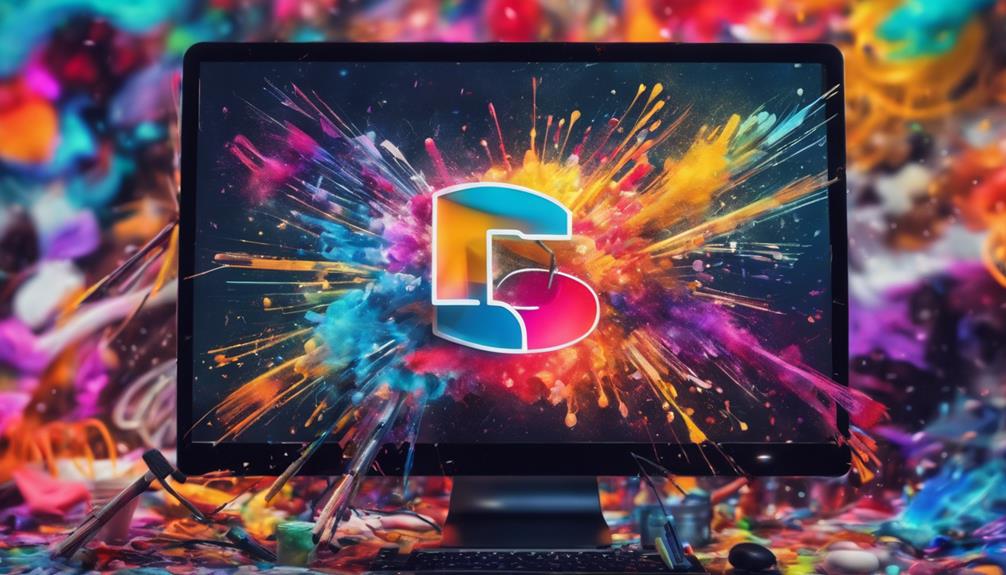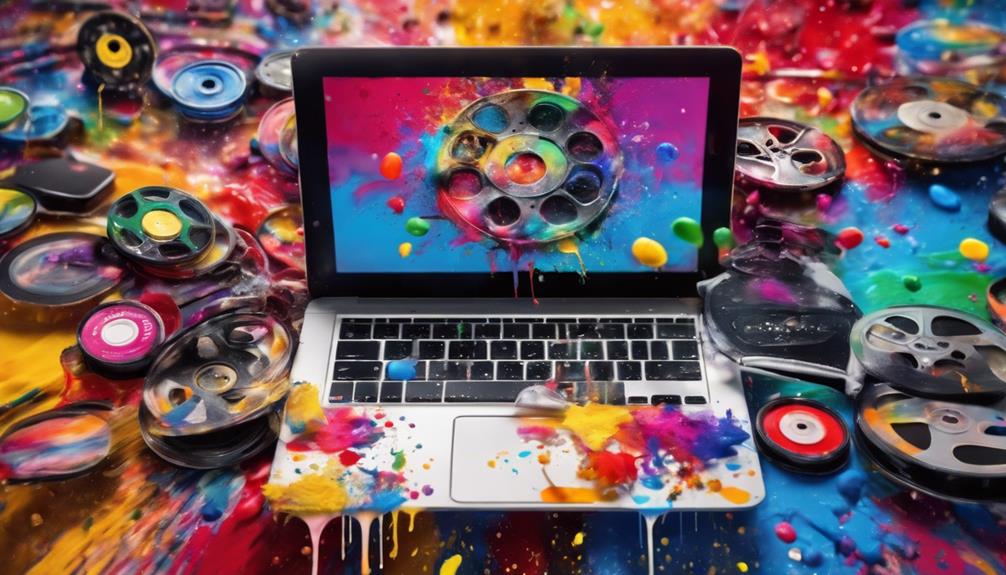As an artist, you might find the world of music streaming sites overwhelming, but understanding them is essential for your success. From grasping how music streaming works to knowing which platforms offer the best payouts, there’s a lot to ponder. You’ll discover that platforms like Spotify for Artists and Apple Music for Artists aren’t just for uploading tracks; they provide insights to help you connect with your audience and boost your streams. Curious about how to make the most out of these tools and ultimately grow your fanbase? Let’s explore how you can navigate and utilize these platforms effectively.
TL-DR
- Understand the royalty structures and revenue per stream on major platforms like Spotify, Apple Music, and YouTube.
- Utilize platform-specific tools like Spotify for Artists and Apple Music for Artists to analyze and grow your audience.
- Engage in playlist collaborations and in-platform promotions to maximize track visibility and streams.
- Leverage social media channels and consistent off-platform advertising to build and maintain a loyal listener base.
- Explore additional exposure and funding opportunities through ArtConnect, Berlin (a)live, art grants, and live streaming platforms like Twitch.
Music Streaming Payouts

Understanding music streaming payouts is essential for any artist looking to monetize their work on digital platforms. When your music is streamed, you earn royalties, which are payments for the use of your copyrighted work. These music streaming payouts can come in various forms, such as master recording royalties, mechanical royalties, and public performance royalties.
To generate revenue, your track typically needs to be played for at least 30 seconds. Now, the amount of money you make per stream can vary. Factors like listener activity, service tiers, and whether you’re signed to a major label deal all play a role. Artists under major label deals often share their revenue with the label, which can reduce their cut.
In contrast, as an independent artist, you might receive a larger share of the royalties, giving you a better return per stream. This makes it vital for independent artists to understand the structure of music streaming payouts to maximize their revenue.
Knowing how these payouts work can have a significant impact on your financial success and help you make informed decisions about your music distribution strategy.
How Music Streaming Works
Music streaming operates by delivering digital audio files directly to listeners through an internet connection, allowing you to access a vast library of songs anytime, anywhere. When you play a song on music streaming services like Spotify, the platform uses a process called streaming to send the audio data in real-time. This means you don’t have to wait to download the entire file before listening, making it convenient and instantaneous.
Live streaming platforms also play an essential role, enabling artists to perform live for their audience, expanding their reach beyond traditional venues. As an artist, you earn royalties each time your music is streamed. These royalties come from master recordings, mechanical royalties, and public performance royalties. The amount you receive depends on factors like total streams, the platform’s revenue, and payout percentage.
For independent music artists, streaming can be particularly beneficial. They often receive a higher percentage of royalties compared to those signed with major labels, who may have more complex royalty distribution agreements. Major streaming services dominate the market with varied payouts per stream, influencing your overall earnings.
Understanding how these platforms work can help you maximize your revenue and grow your fanbase.
History of Music Streaming

Streaming services have revolutionized how we access and enjoy music, with their roots tracing back to the early 2000s. It all began with platforms like Napster and Pandora, which fundamentally changed how people discovered and listened to music. These early services paved the way for a new era in the history of music streaming.
Spotify, launched in 2006, played a pivotal role by popularizing the subscription-based model. This allowed users to stream vast music libraries for a monthly fee, leading to widespread adoption. As physical music sales plummeted, the industry pivoted towards digital distribution, with streaming becoming the dominant form of music consumption.
Other streaming platforms like Apple Music, Amazon Music, and Tidal soon emerged, each offering unique features and exclusive content to attract users. This competition fostered innovation and expanded options for listeners. However, the rise of streaming also had a significant impact on artist revenue streams.
Artists had to adapt to this new digital landscape to reach broader audiences and safeguard their work’s financial viability.
Understanding the history of music streaming helps you appreciate how these changes have shaped today’s music industry and the opportunities available for artists navigating this digital frontier.
Streaming Resources for Artists
As streaming has become the primary mode of music consumption, it’s important for artists to leverage the resources provided by major platforms to effectively promote their work and engage with their audience. Music Streaming Platforms like Spotify, Apple Music, YouTube, and Amazon Music offer a variety of tools to help you maximize your reach and grow your fanbase.
- Spotify for Artists: This platform provides valuable analytics, including monthly listeners, and tools for refining your Music Marketing strategies. You can also update your Artist profile, submit tracks for playlist consideration, and utilize promotional features.
- Apple Music for Artists: Here, you can gain insights into listener demographics, monitor playlist placements, and analyze performance data. These resources can help you tailor your marketing strategies and optimize your outreach.
- YouTube for Artists: YouTube offers robust tools like YouTube Analytics to track engagement and reach. Additionally, it serves as one of the best platforms for live performances, allowing you to connect with fans in real-time.
Best Streaming Platforms

When assessing the best streaming platforms, you’ll want to take into account factors like user-friendly interface, payment and royalties, and audience reach. Spotify’s leading market share and payout rates make it a top choice, but don’t overlook Apple Music, Amazon Music, and YouTube Music.
Each platform offers unique advantages that can impact your success and earnings.
User-Friendly Interface
Browsing your favorite music has never been easier, thanks to these top streaming platforms with user-friendly interfaces. Let’s delve into the details of the most popular ones:
- Spotify:
With its user-friendly interface, Spotify makes navigation a breeze. The search bar is intuitive, and you’ll love the personalized playlists curated just for you based on your listening habits. Discovering new music is seamless, and the platform’s layout guarantees you spend more time enjoying music and less time searching for it.
- Apple Music:
Apple Music’s sleek and intuitive interface integrates perfectly with your Apple devices, providing a cohesive user experience. The design is clean, and the platform is easy to navigate, making it simple to find your favorite tracks, albums, and curated playlists. You can quickly access your library and explore new music without any hassle.
- YouTube Music:
This platform offers a simple interface that’s ideal for discovering music videos, live performances, and user-generated content. The layout is straightforward, making it easy to find what you’re looking for and enjoy a diverse range of musical content.
For a clean and organized interface, you can also explore Amazon Music and Tidal. Both offer unique features catering to different musical tastes and preferences.
Payment and Royalties
Understanding the world of streaming platforms involves grasping how they compensate artists, with each service offering different payment rates per stream. Spotify, for instance, pays artists an average of $0.003 to $0.005 per stream. This rate can fluctuate based on the listener’s location and the artist’s contract.
Apple Music, on the other hand, is more generous, providing indie artists with an average payment of around $0.00735 per stream. YouTube compensates artists at a much lower rate, averaging between $0.00069 and $0.00085 per stream. This rate is influenced by factors like ad revenue and the viewer’s location.
Meanwhile, Amazon Music offers a more balanced approach, with an average payment of $0.00402 per stream, though this can vary depending on whether the stream is ad-supported or premium. For those seeking the most artist-friendly platform, Tidal stands out. It offers the highest per-stream rate among major platforms, with artists earning between $0.0125 and $0.0075 per stream.
Understanding these differences in payment and royalties can help you decide which streaming service aligns best with your financial goals and values as an artist.
Audience Reach
If you’re aiming to maximize your audience reach, it’s important to take into account the user base of different streaming platforms. As a music artist, you want to make sure your music is accessible to as many listeners as possible. Here are the top streaming platforms to take into consideration:
- Spotify: With over 345 million active users worldwide, Spotify offers the largest audience reach among streaming platforms. Its extensive global presence makes it an essential platform for any artist aiming for maximum exposure.
- YouTube Music: Boasting over 1 billion music users per month, YouTube Music provides a vast audience. The platform’s integration with YouTube’s video service can help music artists reach fans who prefer visual content, enhancing overall reach and engagement.
- Apple Music: With around 60 million paid subscribers, Apple Music has a substantial global presence. The platform’s strong integration with Apple devices ensures a dedicated user base, offering significant reach for artists.
While other platforms like Amazon Music and Tidal also offer notable reach, these three stand out for their extensive user bases and global influence. By strategically utilizing these platforms, you can effectively expand your reach and connect with a diverse audience worldwide.
Boosting Your Streams
Collaborating with other artists on curated playlists can greatly amplify your reach and increase your streams. When you join forces with others, you tap into their audience, introducing your music to new listeners. This can substantially boost your streams across various platforms, ultimately helping you generate income.
Take advantage of in-platform promotion tools like Spotify’s playlist pitching and artist profiles. These tools can enhance your visibility and engagement, driving more traffic to your tracks. Additionally, social media is your ally. Promote your streaming profiles and new releases on platforms like Instagram, Twitter, and Facebook to connect directly with your fans. Consistent off-platform advertising can also direct more listeners to your streams.
Creating and regularly updating your own playlists keeps your followers engaged and encourages them to keep streaming your music. Treat streaming platforms as social networks. Engage with your audience through comments, shares, and likes, building a strong brand identity. By interacting with your fans, you create a loyal listener base that supports your streaming success.
Additional Resources

To further expand your reach and enhance your artistic journey, leverage additional resources like ArtConnect and Berlin (a)live. These platforms not only allow you to showcase your live streaming art but also help you connect with a wider audience.
ArtConnect provides opportunities for artists to display their work and identify red flags before applying to open calls, ensuring you make informed decisions.
Berlin (a)live offers virtual events that can greatly boost your exposure through live streaming. By using platforms like YouTube Live, Facebook Live, Instagram Live, and Twitch, you can build a loyal following and engage with viewers in real-time.
Here’s a concise guide to live streaming resources that can elevate your artistic presence:
- ArtConnect: Utilize this platform to identify open calls, showcase your work, and connect with other artists. It’s an excellent resource for networking and gaining exposure.
- Berlin (a)live: Participate in virtual events to gain visibility and interact with a broader audience. This platform is ideal for artists looking to host live streaming art sessions.
- Art Grants and Residencies: Seek out funding opportunities and residencies to support your projects and gain recognition. These resources can provide the financial backing needed to further your career.
Next up, learn all about performance rights organizations in this guide.
